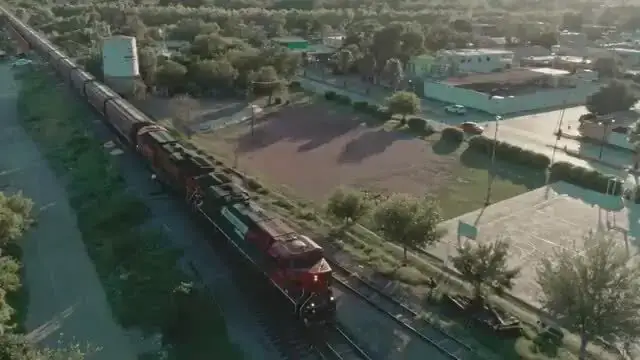
This Country is Experiencing a Real Rail Revival
Aug 18, 2025
Get Our E-Book!
We’re thrilled to announce the upcoming release of our first-ever e-book: a curated compilation of 100 Railways Explained scripts, filled with insights, facts, and rail stories from across the globe. If you love our videos, you’ll definitely enjoy reading it. https://payhip.com/b/mTDPX
Support Us & Get Exclusive Benefits:
Become a member on Patreon for exclusive content, behind-the-scenes access, and more: https://www.patreon.com/railways_explained
Join our YouTube membership to support the channel and get special perks: https://www.youtube.com/channel/UCGq3OyOoLPYj4Oyk1DWnKxQ/join
Donate via PayPal: PayPal.Me/railwaysexplained
Check out our official merch and show your love for all things railway: https://railways-explained.creator-spring.com
Mexico is in the middle of a real railway renaissance - with billions of dollars invested to bring passenger back on the trains! What makes this even more interesting is the fact that, once a country with a thriving rail network, Mexico saw most passenger services completely vanish after privatization in the 1990s. Now, under the mandates of the last two presidents, the government is seriously reviving and expanding routes across the country, aiming for speeds of 160–200 km/h.
The plan includes seven main passenger corridors spanning incredible 8,000 km, most of which are on existing freight concessionary lines. New projects like the Mexico City – Querétaro and Mexico City – Pachuca lines are already under construction, with dozens more on the project pipeline. Major investments are also going into the iconic Tren Maya, the Interoceanic Corridor linking the Gulf of Mexico and the Pacific, and new electrified high-capacity intercity routes that will connect industrial hubs and tourist destinations across the country.
This is more than just transport policy — it’s a $58 billion national mobility and infrastructure strategy. By prioritizing passenger rail alongside freight, Mexico aims to ease congestion on busy highways, offer greener travel options, and strengthen regional economies. The reforms also allow private concession holders to operate passenger services, with the state ensuring passenger transport remains a priority in future regulations.
From a competitive alternative to the Panama Canal to cross-country journeys linking major cities, Mexico’s railway revival is one of the most ambitious infrastructure undertakings in the world today. It’s a story of vision, politics, and engineering that could make rail the backbone of countries mobility in the 21st century — and possibly a model for other nations to follow.
Subscribe for more in-depth railway stories and analyses from around the world.
Big thanks to our Patrons:
Walid, Mind K, An Oni Moose, Julian Baumann, Hendrik Hinrichs, Robert P. Walsh, Xosé F. Estrada, Mårten Hammarstrand, Lucas Richter, Korawich Kavee, Alex Zaslavsky, Ben M, Nathan Walls, Bill, Tim McKeoun, August Bigelow, Brendan McKeon, Linda Vainomae-Hoffmann, Linda Vainomae-Hoffmann, Reinforcedconcrete, Alex McDonald, Martin Pelles, Alice Conalbi, Declan Crowley, Martin Hinge, William Rohe
Follow us on Social Networks:
Facebook: https://www.facebook.com/RailwaysExplained/
Instagram: https://www.instagram.com/railways_explained/
Linkedin: https://www.linkedin.com/company/70132922/admin/feed/posts/ #munich
#mexico
Show More Show Less #education
#Long Distance Bus & Rail
#Tourist Destinations


